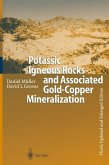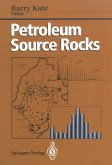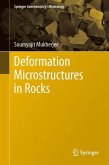The origin of different kinds of igneous rocks can be understood in terms of their tectonic setting, and by way of the isotope compositions of strontium, neodymium, and lead. This book explains the petrogenesis of igneous rocks as a consequence of tectonic processes resulting from interactions between asthenopheric plumes and the overlying lithospheric mantle. The relevant principles of isotope geochemistry are explained in the first chapter, making it accessible for university students as well as professionals. The relevant isotopic data is presented in diagrammatic form. The book contains more than 400 original drawings.
his book is intended for graduate students of the Earth Sciences who require a T comprehensive examination of the origins of igneous rocks as recorded by the isotope compositions of the strontium, neodymium, lead, and oxygen they contain. Students who have not had a formal course in the systematics of radiogenic isotopes can acquire a basic understanding of this subject by a careful study of Chap. 1. Addi tional information is readily available in a textbook by Faure (1986). The primary purpose of this book is to demonstrate how the isotope composition of Sr, Nd, Pb, and 0 in igneous rocks has been used to shed light on the origin of igneous rocks and hence on the activity of the mantle and on its interactions with the continental and oceanic crust. The presentations are based on the premise that igneous and metamorphic rocks form as a direct consequence of the dynamic processes of the mantle and of the re sulting interactions between the mantle and the crust. Accordingly, Chap. 2 to 6 ex amine specific types of igneous rocks that form in particular tectonic settings. Each of these chapters starts with questions about the properties of the mantle and crust, and about the relation between the tectonic setting and the rock-forming processes that take place in that setting.
his book is intended for graduate students of the Earth Sciences who require a T comprehensive examination of the origins of igneous rocks as recorded by the isotope compositions of the strontium, neodymium, lead, and oxygen they contain. Students who have not had a formal course in the systematics of radiogenic isotopes can acquire a basic understanding of this subject by a careful study of Chap. 1. Addi tional information is readily available in a textbook by Faure (1986). The primary purpose of this book is to demonstrate how the isotope composition of Sr, Nd, Pb, and 0 in igneous rocks has been used to shed light on the origin of igneous rocks and hence on the activity of the mantle and on its interactions with the continental and oceanic crust. The presentations are based on the premise that igneous and metamorphic rocks form as a direct consequence of the dynamic processes of the mantle and of the re sulting interactions between the mantle and the crust. Accordingly, Chap. 2 to 6 ex amine specific types of igneous rocks that form in particular tectonic settings. Each of these chapters starts with questions about the properties of the mantle and crust, and about the relation between the tectonic setting and the rock-forming processes that take place in that setting.








